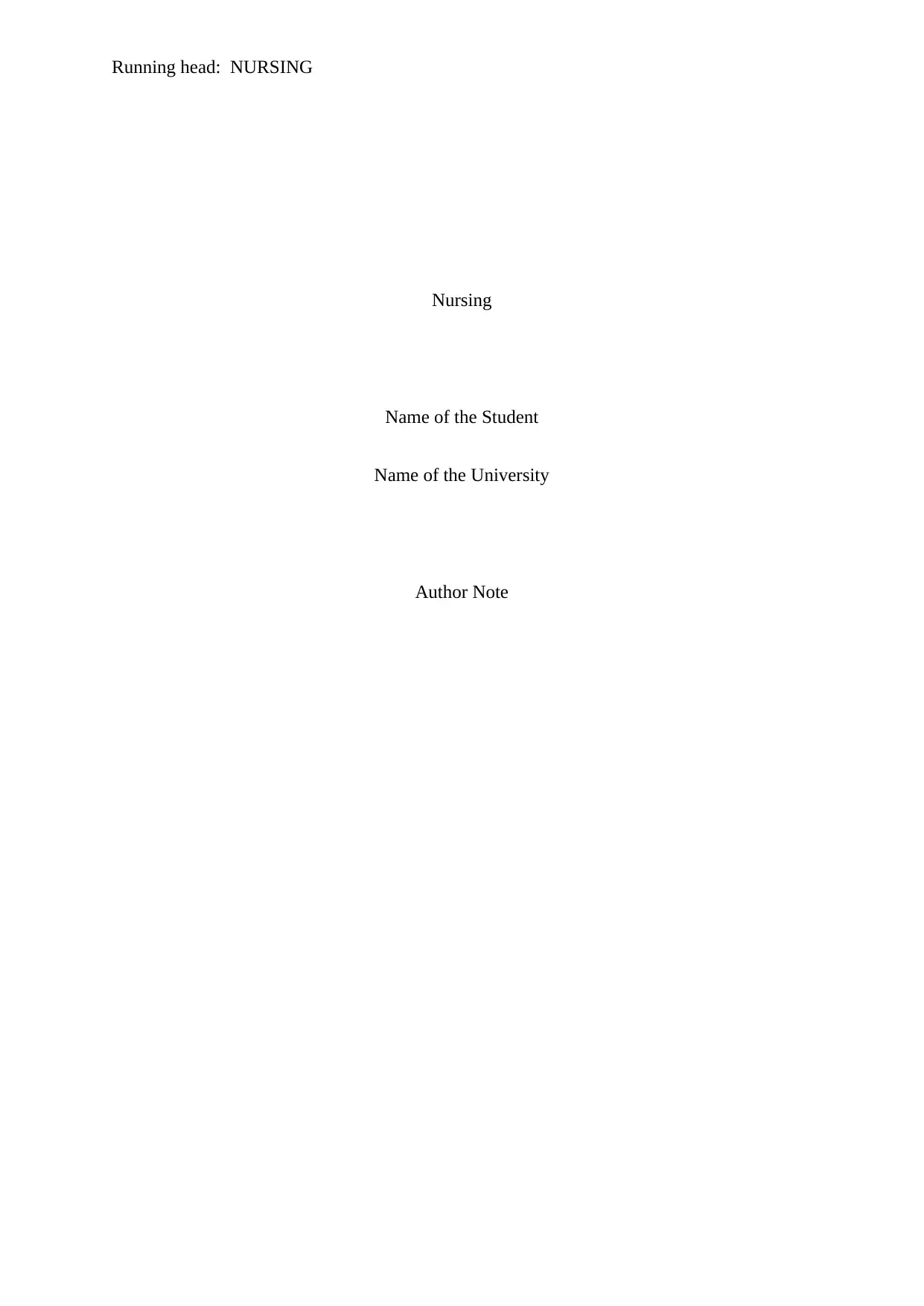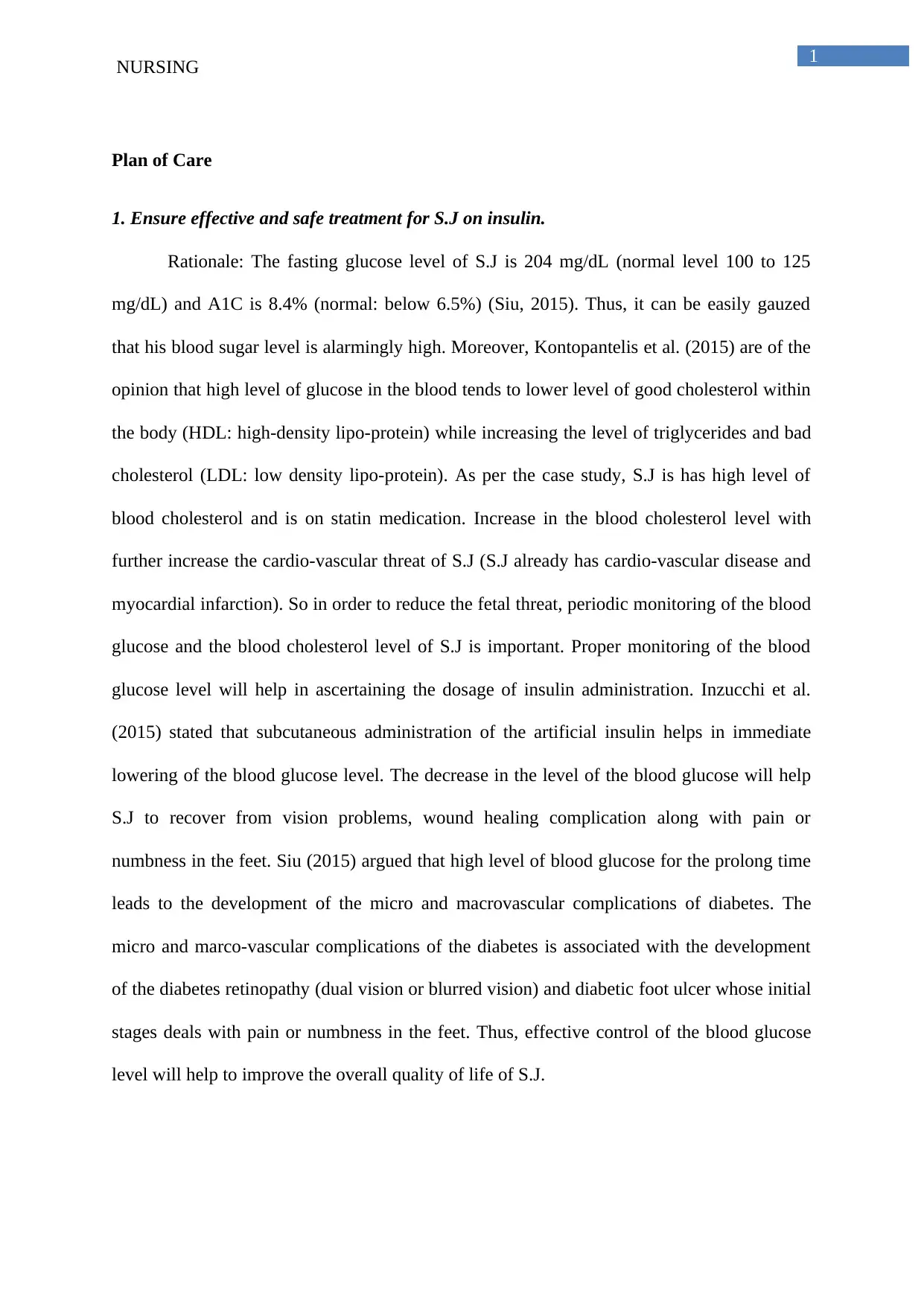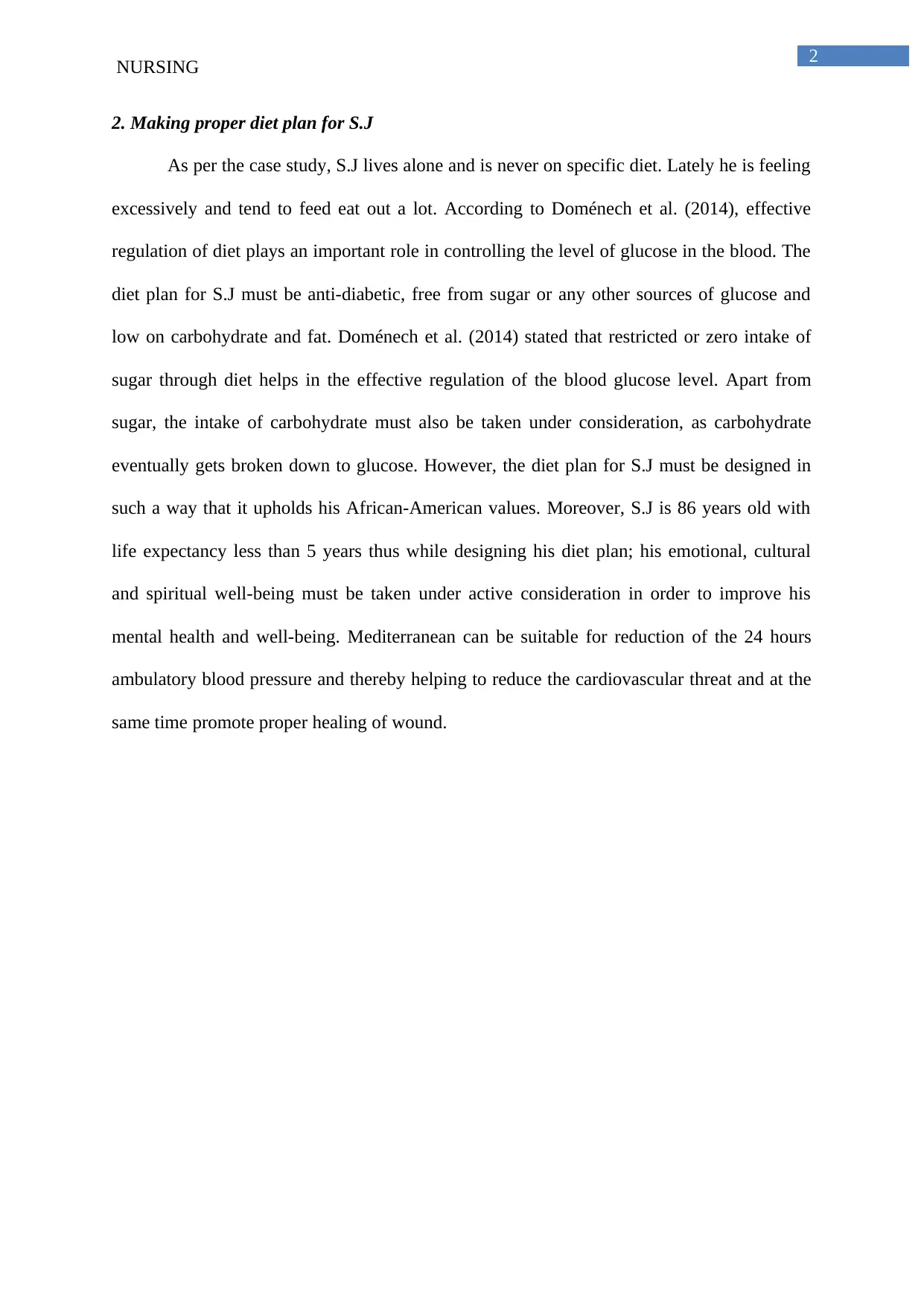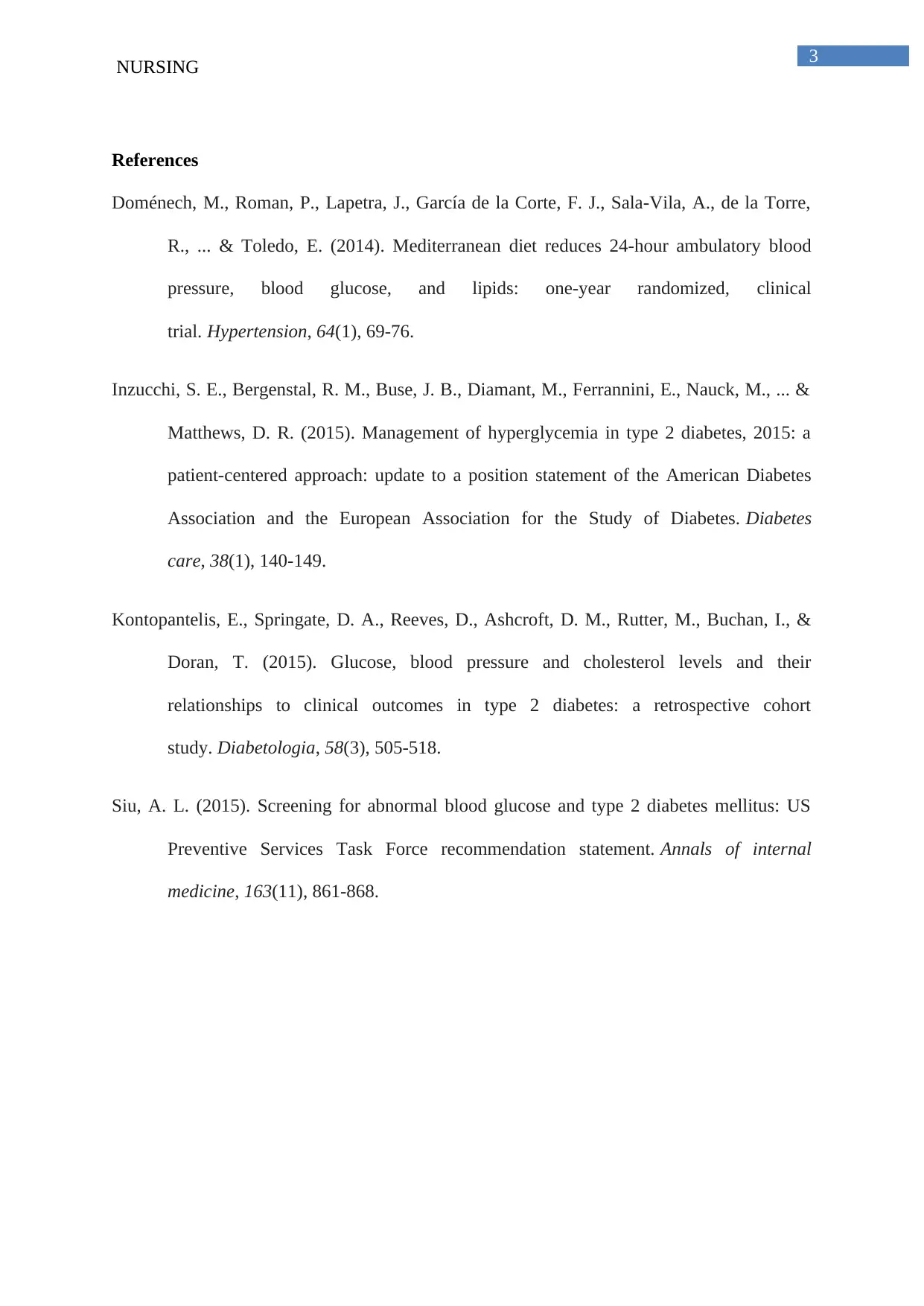Comprehensive Nursing Care Plan: Managing Diabetes for Patient S.J
VerifiedAdded on 2023/06/15
|4
|870
|255
Report
AI Summary
This nursing report presents a comprehensive care plan for an 86-year-old patient, S.J., diagnosed with diabetes. The plan focuses on ensuring effective and safe insulin treatment to manage high blood glucose levels and A1C, aiming to prevent micro and macrovascular complications such as retinopathy and foot ulcers. It also emphasizes the importance of a tailored anti-diabetic diet, low in sugar, carbohydrates, and fats, while considering the patient's African-American cultural values, emotional well-being, and life expectancy. The diet plan aims to reduce cardiovascular threats and promote wound healing, ultimately improving the patient's overall quality of life. The report references studies supporting the importance of blood glucose control, dietary regulation, and individualized care in diabetes management.
1 out of 4









![[object Object]](/_next/static/media/star-bottom.7253800d.svg)